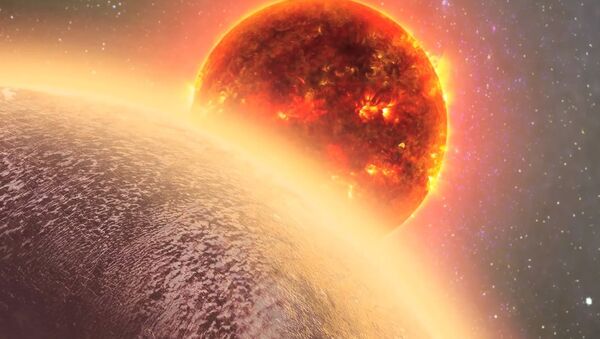Scientists have discovered six extremely heated exoplanets that they say would allow them to learn more about planets outside our solar system. Dr Carole Haswell, Dr Daniel Staab, and Dr John Barnes, all from the Open University in Britain, used a new method to find exoplanets that is based on the oversight of ablation – a process during which materials evaporate from solid or liquid surfaces. In space, ablation occurs when planets get close to stars.
"These new discoveries are very promising for further studies. They should allow us to measure the relationships between the mass, size and composition of planets outside our own solar system", said Dr Carole Haswell.
The researchers detected ablated material in three planetary systems, where in turn they found six planets that were very close to stars and heated to temperatures of 1,100 – 1,800 degrees Celsius. In their work, the team used the High Accuracy Radial Velocity Planet Searcher (HARPS), a spectrograph installed on the European Southern Observatory's 3.6m telescope in Chile.
Three exoplanets belong to the super-Earth type of planets, with masses between three and ten times that of Earth. Scientists say that a further study of the chemical composition of material that evaporates from the surfaces of the discovered exoplanets would reveal the type of rock on the surface.
"We can now see how planets in general are built, and whether our own planet is typical. For example, we don't yet know if it is a coincidence that in the solar system, the Earth and Venus are the biggest rocky objects and have the largest fraction of their mass made of iron", said Dr Carole Haswell.



